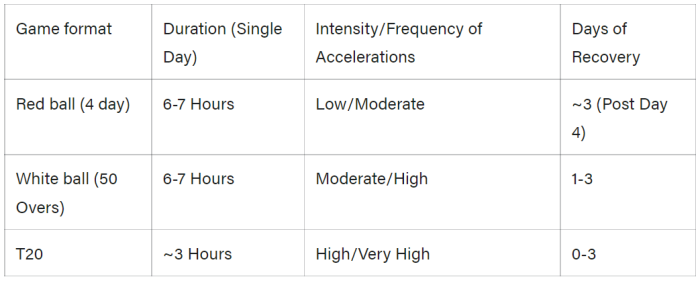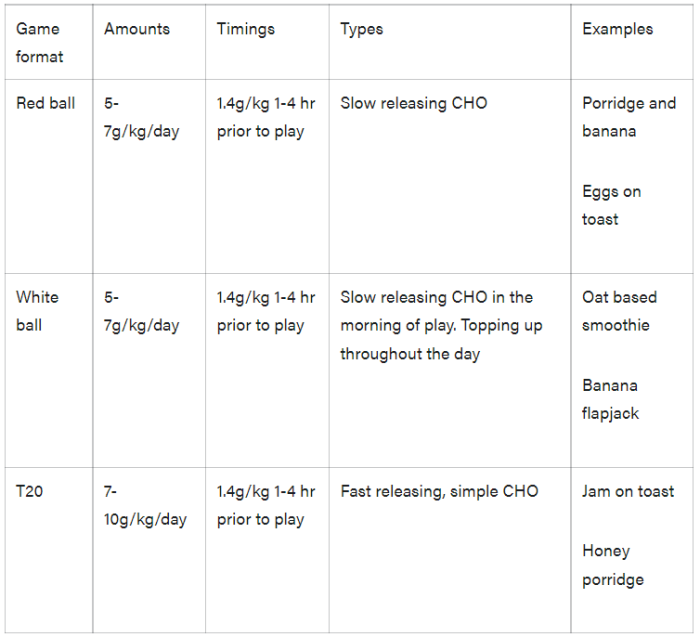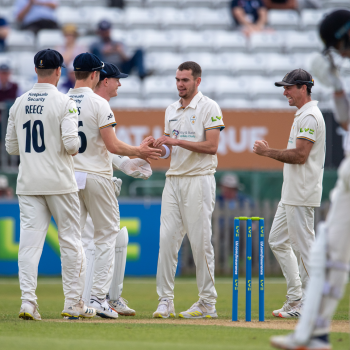Any cricket player or fan will know that the sport comes in all shapes and sizes – from fast and furious T20, to multi-day tests where stamina is paramount. It’s therefore unsurprising that the type of cricket played denotes how players should fuel effectively, adapting nutrition strategies to allow for the demands of the sport at play. To delve deeper into this, we’ve caught up with the expert S&C team over at club partners Derbyshire CCC, who give us the lowdown on the important role that carbohydrates play on the pitch.
Like most sports, fuelling for the work required is essential. Glycogen is the energy source derived from eating carbohydrates (CHO) and CHO consumption, when done well, can lead to improvement in play. In cricket, the strategy is dependent upon the format being played (red ball, white ball, T20 etc) as well as weather conditions, role and individual outcomes. But, utilisation of CHO in cricket is for more than just fuelling for performance; its role in recovery is also key.
What is carb-loading?
Traditional CHO loading means eating excess carbohydrates to fill the muscles with glycogen, whilst also lowering your activity levels 3-4 days before the event. For cricket players, match days are frequently less than three days apart and are often interspersed with training, making lowering activity levels challenging. That being said, carbohydrates play a major role in nutritional strategies in order to sustain the frequency and intensity of match play and training; which can sometimes be more intense than matches themselves.
Through carb-loading, muscles acquire a larger energy reserve, so they are less likely to tire rapidly, allowing players to perform their skills more consistently and execute high intensity, match-defining moments such as fast bowling, or diving to intercept a ball. The same way a car will run longer with a full tank of petrol, so will muscles loaded with glycogen.
Why do cricket players need carbohydrates?
CHO is the body’s preferred energy source. What we do to ensure athletes are appropriately fuelled is tailor their nutrition to their format of play. CHO requirements differ dependent on the game format, therefore loading strategies change dependently.
T20 is the most demanding format in terms of frequency of high intensity work. Red Ball formats are the least intense, but last much longer than T20 games and are therefore more endurance focused. 50-over competitions are similar in length to red ball games, but played at a much greater intensity and therefore are more complex to strategise for.
Recovery requirements according to type of cricket

Consequently, whilst T20 is the highest intensity form of cricket, both red and white ball cricket still rely on energy from glycogen.
Carbohydrate requirements according to type of cricket

It’s more about CHO loading in recovery
In cricket, the approach to CHO ‘loading’ is not traditional. Generally, it is used more as part of a recovery strategy, as opposed to fuelling. Incorporating CHO as a cornerstone to recovery allows us to fuel for the next day of a red ball game, or the 2nd leg of a back-to-back T20 fixture weekend.
Focusing on nutrition + 1 as the main window for CHO consumption allows us to use a hybrid approach to be sure our players are consuming sufficient CHO for their role (e.g., a bowler requiring more than a slip fielder due to the energy demands). 1-1.2g/kg/hr within the first 2-4hr of recovery is recommended, ideally through a food-first approach.







